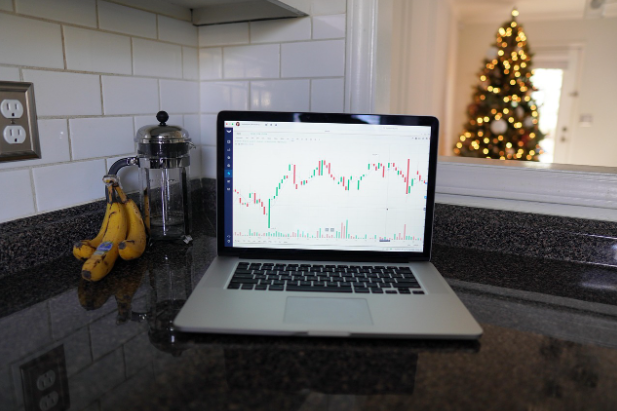Whether it’s checking out the latest price charts, examining the latest on-chain information, or checking out crypto websites, crypto price analysts have many ways of making their crypto price predictions. Today, we are going to look at the three main types, which are fundamental, technical, and on-chain analysis, to let you know how they work and what they’re all about.
Fundamental analysis
First off, fundamental analysis looks at the intrinsic value of a crypto project in order to work out what might happen to its price. For instance, it looks at the platform’s founders. Let’s say a new crypto project featured on newcryptocurrency.com is run by a named person, or a named group of people, who have a successful track record in blockchain finance. That particular scheme would, almost certainly, be expected to do rather better than one whose pseudonymous founders had little to no experience in building or developing projects in the world of crypto. If, on the other hand, the people behind the first crypto had been responsible for a project that tanked, then it’s likely that would factor into its price forecast.
Similarly, fundamental analysis looks to see if there are any big backers, such as notable crypto-friendly venture capital organisations, who can lend their credibility to the project and, by extension, give the price a boost. There’s also the matter of transparency and communication. If a project is open and upfront with its community, that is going to work in its favor, but if it is secretive and prone to giving out misinformation, then that will probably count against it.
Fundamental analysis also looks at how useful a crypto is and whether it does what it sets out to do. That is, if it does anything at all other than serve as a store of value. A token’s supply, whether it is capped or uncapped, and if it is deflationary or not, all factor into a crypto price prediction. Similarly, it will need to have a clear and achievable road map and detailed, well-written technical documentation, such as Bitcoin’s whitepaper, if it is to win the hearts and minds of fundamental analysts. If, on the other hand, it is poorly set up, has unbalanced tokenomics, or it’s not entirely clear what the token does, then it’s likely it’ll be given a wide berth. That said, news no one expects to happen can break, so fundamental analysis can fall down on that front.
Technical analysis
There is an argument that technical analysis is the purest form of analysis there is. It doesn’t deal in the what-abouts of fundamental analysis, nor does it, proponents might argue, look at something as potentially vague and unpredictable as human behavior at the heart of on-chain analysis. Instead, it is all about the numbers and how, if something has done something before, then it is entirely likely that it will do it again.
Charts are at the absolute heart of technical analysis. For example, the candlestick chart gives people a range of formations to base their predictions on, with the hanging man suggesting a price will make a downturn, a doji often coming before a price reversal, and the sign of the hammer indicating a near-future upturn. Meanwhile, classic patterns, such as the bullish head and shoulders and its bearish reverse form, triangles, which indicate breakouts and reversals, and double tops and bottoms, which suggest a turn from bullish to bearish and vice versa, are all key to technical analysis.
Meanwhile, technical analysts love to use different tools and indicators to help them carry out their cryptocurrency price predictions. For instance, moving averages use crossovers to help measure a crypto’s support and resistance levels and the direction of trends, while Bollinger bands measure how volatile a price is, and Ichimoku clouds measure pretty much everything. Similarly, indicators such as the Relative Strength Index (RSI), which shows whether something is overbought or oversold, and the Moving Average Convergence/Divergence (MACD) indicator, which shows when momentum shifts are likely to take place, are popular.
Going back to support and resistance, these help technical analysts understand when people are likely to enter or exit the market. It’s also worth noting that technical analysis deals in likelihoods, rather than certainties, so it makes sense to do your own research and be careful out there.
On-chain analysis
Finally, there is on-chain analysis. While one could use technical and fundamental analysis to look at traditional stocks and shares trading, on-chain is something specific to crypto. For example, looking at how whales, or large crypto traders, behave and what they buy and sell can suggest a price movement, while looking at active addresses and new addresses can help measure enthusiasm and engagement with a cryptocurrency. Platforms such as Nansen, which also features AI signals to let analysts know significant market movements in real-time, and Glassnode show various wallet movements and are vital parts of the world of on-chain analysis.
Meanwhile, how much a blockchain platform is being used and by how many people can also give on-chain analysts insight. If, for example, a platform or blockchain has a lot of activity, that might bode well for its cryptocurrency’s price. On the other hand, a blockchain’s gas fees would need further analysis. Sometimes, high transaction prices might indicate a rise in popularity, which would suggest a price rise is imminent, but they could just as easily suggest that the network is getting congested, which might lead to a price drop, at least in the short term.
There’s also what cryptos are going in and out of exchanges, and the volumes in which they are doing so. A high inflow could be a harbinger of a sell-off, which often leads to a price drop, while a high outflow suggests buying is taking place, which normally lifts the price of the crypto. Meanwhile, with cryptocurrencies such as Ethereum, which allow staking, what coins and tokens are being staked could indicate a possible price rise. As always, though, it makes sense to do your own research and remember that sudden changes can take place.
So there we are. Those are the three types of cryptocurrency analysis. They all have their own strengths and weaknesses. This means smart analysts will combine the three to make their cryptocurrency price predictions. However, crypto is notoriously volatile, so you need to remember to do your own research and never invest more than you can afford to lose.










Recent Comments